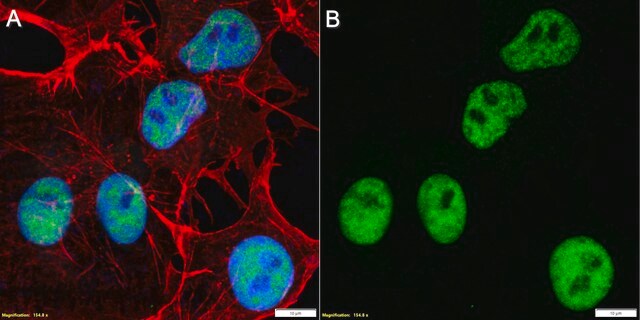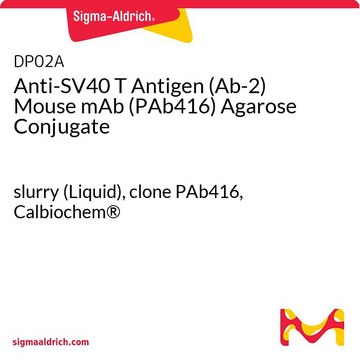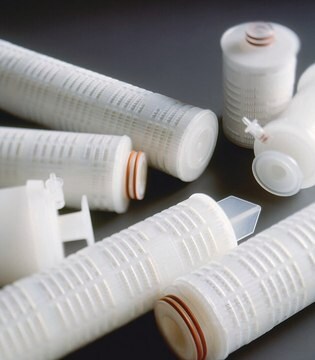DP02
Anti-SV40 T-Antigen (Ab-2) der Maus mAb (PAb416)
liquid, clone PAb416, Calbiochem®
About This Item
Empfohlene Produkte
Biologische Quelle
mouse
Qualitätsniveau
Antikörperform
purified antibody
Antikörper-Produkttyp
primary antibodies
Klon
PAb416, monoclonal
Form
liquid
Enthält
≤0.1% sodium azide as preservative
Speziesreaktivität
SV40-infected cells
Hersteller/Markenname
Calbiochem®
Lagerbedingungen
do not freeze
Isotyp
IgG2a
Versandbedingung
wet ice
Lagertemp.
2-8°C
Posttranslationale Modifikation Target
unmodified
Allgemeine Beschreibung
Immunogen
Anwendung
Immunblotting (1–5 µg/ml, siehe Anwendungsreferenzen)
Immunfluoreszenz (1–5 µg/ml)
Immunpräzipitation (1–5 µg Antikörper, Kat.-Nr. DP02A verwenden)
Paraffinschnitte (siehe Anwendungsreferenzen)
Verpackung
Warnhinweis
Physikalische Form
Hinweis zur Analyse
3T3-Zellen
SV80- oder SV-T2-Zellen
Sonstige Hinweise
Whyte, P., et al. 1988. Nature334, 124.
Mitchell, P.J., et al. 1987. Cell50, 847.
Dixon, R.A.F. and Nathans, D., 1985. J. Virol.53, 1001.
Simanis, V. and Lane, D.P. 1985. Virol.144, 88.
Mann, R.S. and Carroll, R.B. 1984. Virology138, 379.
Sarnow, P., et al. 1982. Cell28, 387.
Crawford, L.V., et al. 1981. Proc. Natl. Acad. Sci. USA78, 41.
Lane, D.P. and Crawford, L.V. 1979. Nature278, 261.
Carroll, R.B., et al. 1974. Proc. Natl. Acad. Sci. USA71, 3754.
Tooze, J. 1973. Cold Spring Harbor, New York.
Tegtmeyer, P. 1972. J. Virol.10, 591.
Rechtliche Hinweise
Sie haben nicht das passende Produkt gefunden?
Probieren Sie unser Produkt-Auswahlhilfe. aus.
Lagerklassenschlüssel
12 - Non Combustible Liquids
WGK
WGK 2
Flammpunkt (°F)
Not applicable
Flammpunkt (°C)
Not applicable
Analysenzertifikate (COA)
Suchen Sie nach Analysenzertifikate (COA), indem Sie die Lot-/Chargennummer des Produkts eingeben. Lot- und Chargennummern sind auf dem Produktetikett hinter den Wörtern ‘Lot’ oder ‘Batch’ (Lot oder Charge) zu finden.
Besitzen Sie dieses Produkt bereits?
In der Dokumentenbibliothek finden Sie die Dokumentation zu den Produkten, die Sie kürzlich erworben haben.
Unser Team von Wissenschaftlern verfügt über Erfahrung in allen Forschungsbereichen einschließlich Life Science, Materialwissenschaften, chemischer Synthese, Chromatographie, Analytik und vielen mehr..
Setzen Sie sich mit dem technischen Dienst in Verbindung.








